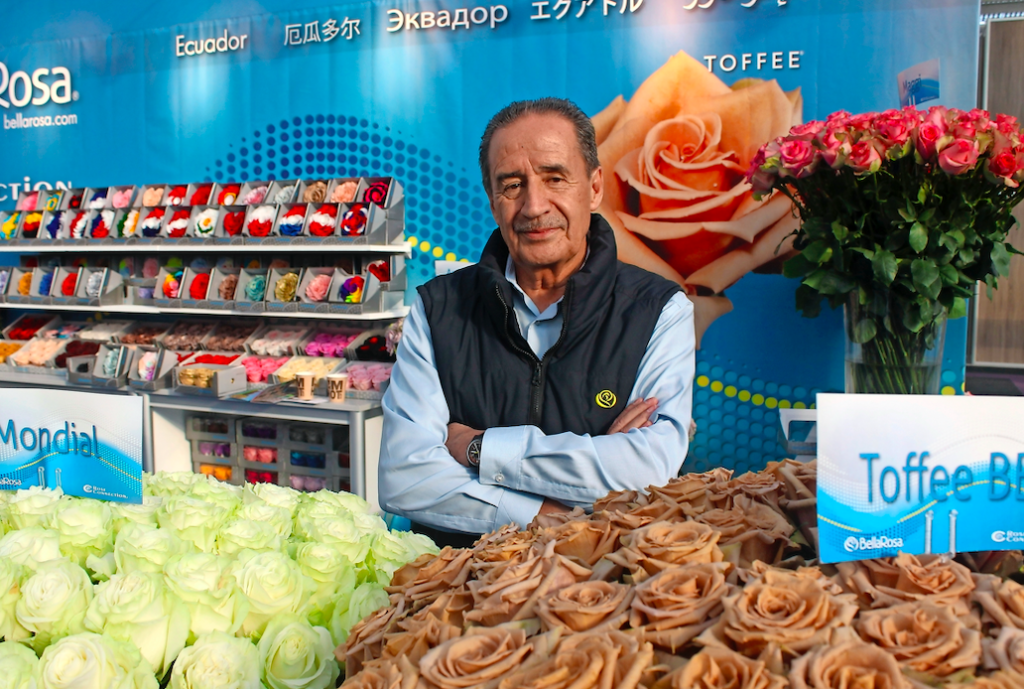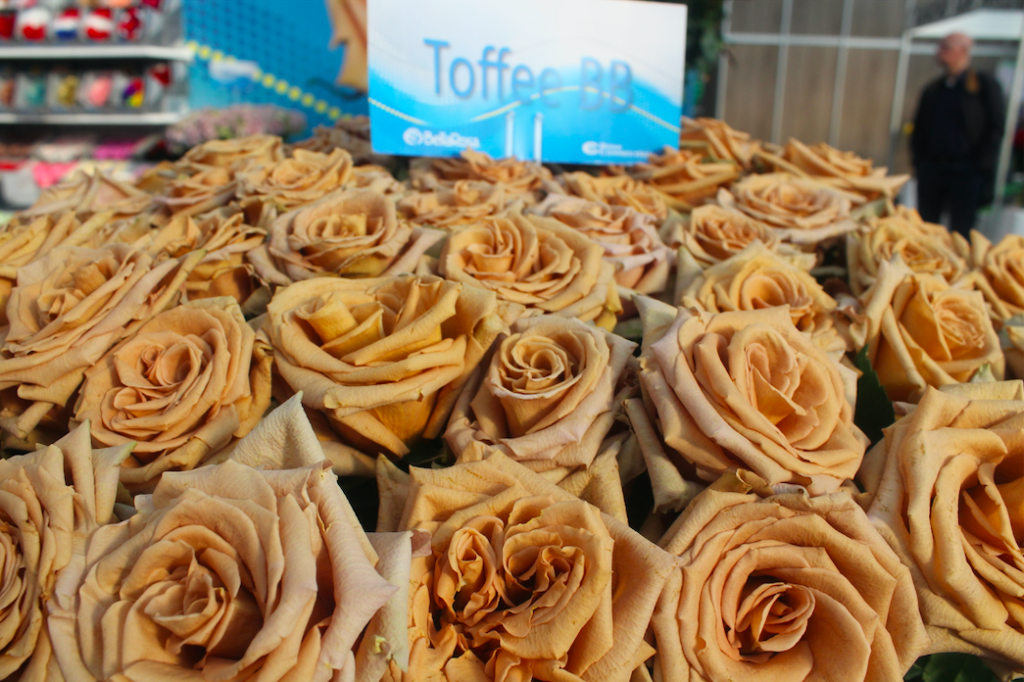BellaRosa is one of the nominees for the AIPH International Grower of the Year award. The company of former architect Gonzalo Luzuriaga began in 1996 with 5 ha. Nowadays, it’s trying to differentiate itself with 60 ha of roses. Luzuriaga: “Competition is very tough.”
An employee told him the news just before the beginning of the last day of the IFTF trade fair in Vijfhuizen. That’s when Gonzalo Luzuriaga found out about their nomination for the International Grower of the Year (IGOTY) award. The CEO of BellaRoses was delighted and spoke enthusiastically about their farm in Ecuador. He told us how he, an architect without any knowledge of roses, became a grower 25 years ago. And he spoke about their preserved roses and the breeding activities of the company.
Knew nothing
One day, an older brother – Luzuriaga is from a family of twelve siblings – suggested to start a rose farm. This brother, who worked at the World Bank, was going to manage the family business, but he never did. That responsibility was passed on to Gonzalo Luzuriaga. “I knew nothing about roses, I was an architect”, said Luzuriaga. “One of the first things I did, was travel to Amsterdam to talk with Peter Ullrich [founder of Esmeralda Farms, ed.]. I learned a lot about the rose market from him.”

Luzuriaga started in 1996 with a 5-ha, equatorial site at an altitude of 3,000 metres. Nowadays, the company consists of 60 ha and they grow 84 varieties. BellaRosa is also the owner of the adjacent company RoseConnection, which was founded especially for the Russian market. But when the Russian market collapsed in 2008, due to the financial crisis among other things, the company was taken over by BellaRosa. “In the meantime, Russia has become one of the 63 countries we supply to”, explained Luzuriaga. “If there are problems in one of the markets, others can compensate.” Their flowers are sold across four different continents.
Europe main market
BellaRosa was among the victims of the recent strike in Ecuador. “I’ve been working in the flower industry for 28 years and I’d never experienced such violent riots before”, said Giovanni Almeida, BellaRosa’s sales director. “Lorries and farms were attacked all over the country. I was held hostage twice. The first time I was forced to drive 14 strikers to Quito. It was surreal, as if I was in a movie. The second time was voluntary. It was a way to get back to the farm.”
The strike also had financial consequences for BellaRosa, but compared to some others, it wasn’t too bad. Companies south of Quito were much worse off. In that region, strikers entered the nurseries and prevented growers from getting their roses to the airport on time.
Uncertainty
Things are calm in Ecuador now. But the rose market is challenging, is Almeida’s experience. “There’s a huge supply of roses in Ecuador, as well as in the rest of the world. As a result, prices are going down. The demand needs to go up.”
In the past, customers would order roses in advance for important holidays like Valentine’s Day, All Saints’ Day, Women’s Day and Mother’s Day. They wanted to be sure they’d be able to buy a certain volume for a certain price. But nowadays, customers wait until the very last moment. “Even for the holidays. That causes great uncertainty.”
AT IFTF, BellaRosa exhibited a large assortment of preserved roses. “That’s my work”, said Luzuriaga, pointing at the different colour shades. “We’re currently producing 100,000 of these per month. We’re planning for 500,000 per month. Why? There are far too many fresh cut roses on the market. The roses from Kenya and Ethiopia are very cheap. Compared to Colombia, our labour costs are much higher. Our cost price per rose is 33 cents. Competition is very tough.”
Their preserved roses are shipped all over the world. BellaRosa also sells dyed roses. They have been for around 12 years. “It was on a trip to the Netherlands that I saw the Rainbow roses for the first time. I found them so mysterious, I had to find out how it’s done.” Luzuriaga has noticed that coloured roses are very popular in China, where 10% of their production ends up.

Toffee
BellaRosa has their own breeding company, called Brown Breeding. A vase filled with toffee-coloured roses, aptly named Toffee, made for a striking display at IFTF. “This is a natural colour”, Luzuriaga assured. “The variety is cultivated by five growers. About half a million have been planted by now. Toffee is very successful.”
It seems like BellaRosa are doing everything they can to differentiate themselves. It’s now up to the IGOTY jury to decide whether the Ecuadorean farm is distinctive enough.





